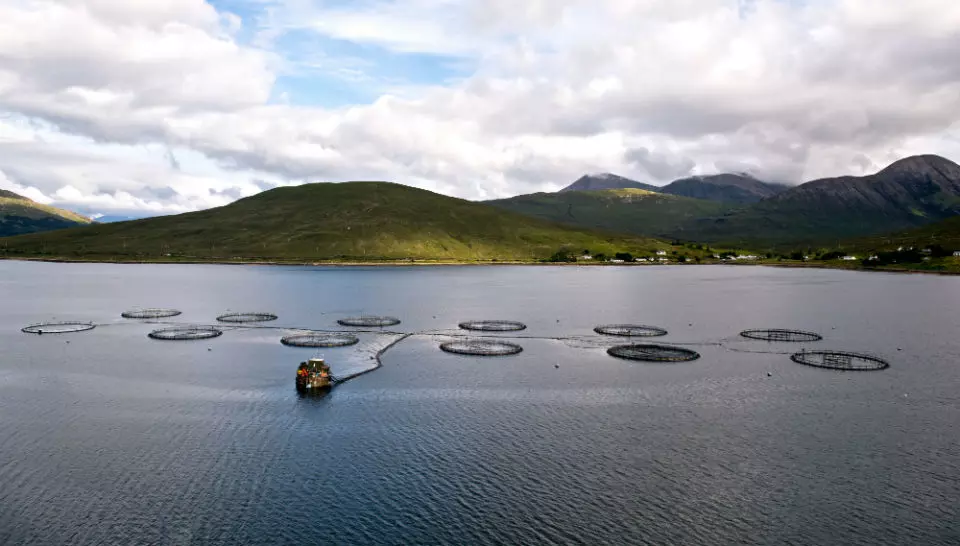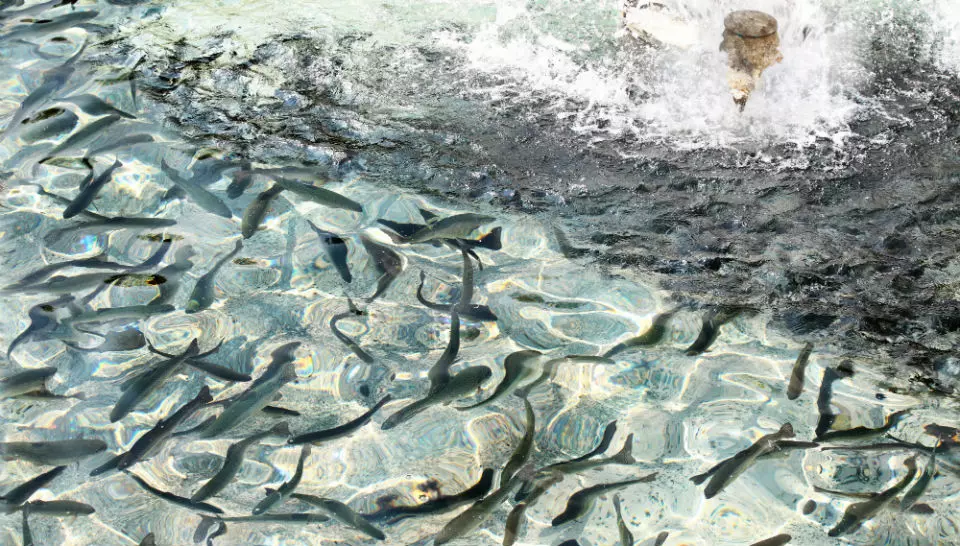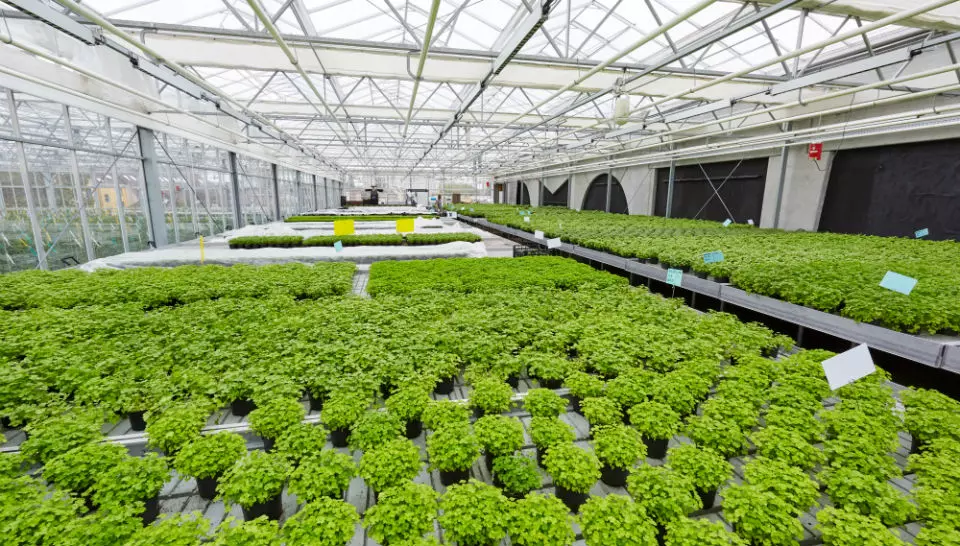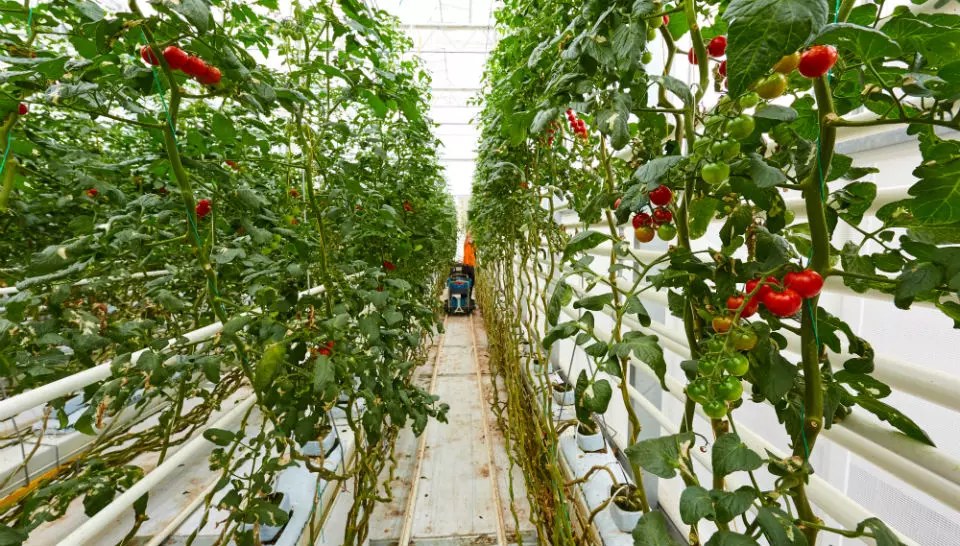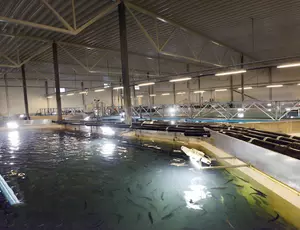Onshore or offshore aquaculture, protein-rich alternatives made from insects, and the wide-scale deployment of aquaponics … Over the past few years, innovations have attempted to minimise the impact on the environment of conventional aquaculture by highlighting more virtuous practices that guarantee a better quality of marine product.
Aquaculture has been practised for several thousand years in Asia, so it’s not a new concept. And yet, for around thirty years, the domestication of marine resources – fish, molluscs and aquatic plants – has grown markedly, notably in China, which produces more farmed fish alone than the rest of the world, to the extent that on a world scale, since 2013, the volumes produced exceed that from capture fisheries, which are increasingly threatened by overfishing. This concerns one-third of all fish species, according to experts at the Food and Agriculture Organisation (FAO), a United Nations agency. These experts have estimated that aquaculture production could reach 109 million tonnes by 2030, up by 37% over 2016.
But if aquaculture enables us to meet a growing demand for seafood, driven up notably by demographic growth, it is not always without consequences on the environment. “Aquaculture has often been reproached with the use of antibiotics, residual waste and exceeding carrying capacity: the aquatic environment has self-purifying properties, which when exceeded, lead to a high mortality rate and damage marine ecosystems,” explains Lionel Dabbadie, an aquaculture research scientist with CIRAD.
“The aquatic environment has self-purifying properties, which when exceeded, lead to a high mortality rate and damage marine ecosystems.”
Reducing the pressure on coastal areas
And yet, for several years now, aquaculture has been diversifying and innovations that are more respectful of the environment have been introduced. One of these consists in limiting its impact on marine ecosystems and coastal areas by breeding fish in controlled basins in semi-closed circuits. “The advantage of this type of recirculation system is that only 1% of the used water is rejected. As the volume is low, it is easy to treat,” emphasises Frédéric Gaumet at Krüger Kaldnes, a Veolia subsidiary specialised in water treatment.
“ In this way, in salmon farms in Norway and in the Swiss Alps where this technology is used, as many particles as possible (remains of foods, waste, etc.) are eliminated with the help of self-cleaning filters. A balance in the water’s gas content also has to be ensured, and its temperature and pH controlled,” he adds specifying that the use of antibiotics should be banished and chemical products limited to the extent possible. The only problem is that onshore aquaculture cannot be practised everywhere. Certain observers dream of placing these farms near towns, but they need to be near a source of good-quality water at a temperature close to that required by the fish,” he notes.
“Certain observers dream of placing these farms near towns, but they need to be near a source of good-quality water.”
Another solution, which is less advanced to date, consists in practising aquaculture offshore. In 2017, a survey published in the review Nature claimed that 0.015% of the world’s oceans would be sufficient to produce a quantity of fish equal to that fished in one year. “This technique gets round the problem of exceeding load capacity: the aquatic environment has no trouble purifying the effluents,” says Lionel Dabbadie, who nevertheless points out a few disadvantages, including the difficulty in rendering infrastructures profitable and the costs linked to transporting merchandise and personnel. “The carbon footprint is greater for offshore aquaculture, without mentioning the risks of pollution, particularly by microplastics, storms and diseases,” adds Frédéric Gaumet.
Feeding fish with insects
Another key challenge for aquaculture tomorrow lies with feeding fish. In a report published in 2017, the NGO Bloom claims that these aquatic farms alone consume 57% of the world’s production of fishmeal, more than pig farms (22%) or poultry farms (14%). More ecological protein-based alternatives are only now beginning to be introduced. Since 1 July 2018, the European Union authorises aquaculture farms to feed their fish with proteins from insect larvae.
Veolia partner, Mutatec breeds black soldier flies to produce insect meal that is rich in proteins. These flies are not harmful to humans, non-invasive, and feed on organic waste, which contributes to enhancing their value. “Omega 3 – necessary for feeding fish – can also be found in insects and algae, either directly or via precursors, which are interesting sources to meet Omega 3 requirements,” says Frédéric Gaumet.
Towards organic aquaculture?
More broadly, aquaculture would gain from adopting the principles of aqua-ecology, starting with the natural prevention of certain diseases and parasites, such as sea lice, which sometimes affect farms. Aquaponics and rice/fish farming are the most widespread embodiments of this. The fishes’ activity enables plants (or rice) to grow healthily and naturally, without chemical products or antibiotics: a biological filtering carried out by micro-organisms transforms the ammoniac contained in fishes’ urine, and fertilises the plants.
For Lionel Dabbadie, “Aquaponics is an effective technique, which meets current expectations: it’s an activity that has had great success on a small scale, in short, high-quality supply chains.” And unlike onshore aquaculture, aquaponics is highly compatible with urban settings, “even though, we are quickly limited in terms of surface area, and hence profitability,” adds Frédéric Gaumet. However, the organic label cannot be used with this type of aquaculture production, mainly because of the density of the farms.
“Aquaponics has had great success on a small scale, in short, high-quality supply chains.”
As part of its Fertile Cities project, “Veolia is keen to take part in creating new systems of intensive, high-quality agricultural production systems, in urban and peri-urban environments,” says Loïc Couttelle, head of the Urban Agriculture project at Veolia, which is positioned as “a structuring player involved in one of the main challenges of the coming decades”. In partnership with the aquaponics start-up Bigh, Veolia once again puts its expertise in water treatment to good advantage: “On a big scale, we must introduce an adjustment, which allows us to analyse and treat water from fish before using it to grow plants, partly because fish and plants don’t have the same needs in terms of the pH in water,” explains Frédéric Gaumet.
Of course, such synergies between fish and natural ecosystems can also be applied in marine farms. “Today, many researchers are turning their attention to what is known as integrated multi-trophic aquaculture (IMTA), Lionel Dabbadie points out. “To depollute organic elements (food, waste), filtering molluscs (oysters, mussels) or grazers, (sea cucumber or marine worms) are introduced, and algae used to eliminate the dissolved substances.” The concept, tested in 2006 in the Bay of Fundy in Canada, is now implemented all over the world, notably in certain shrimp farms in Thailand, in ponds in China and in Europe.
There is no doubt about it: the future of aquaculture looks increasingly green.

In partnership with Usbek & Rica, the media that explores the future



